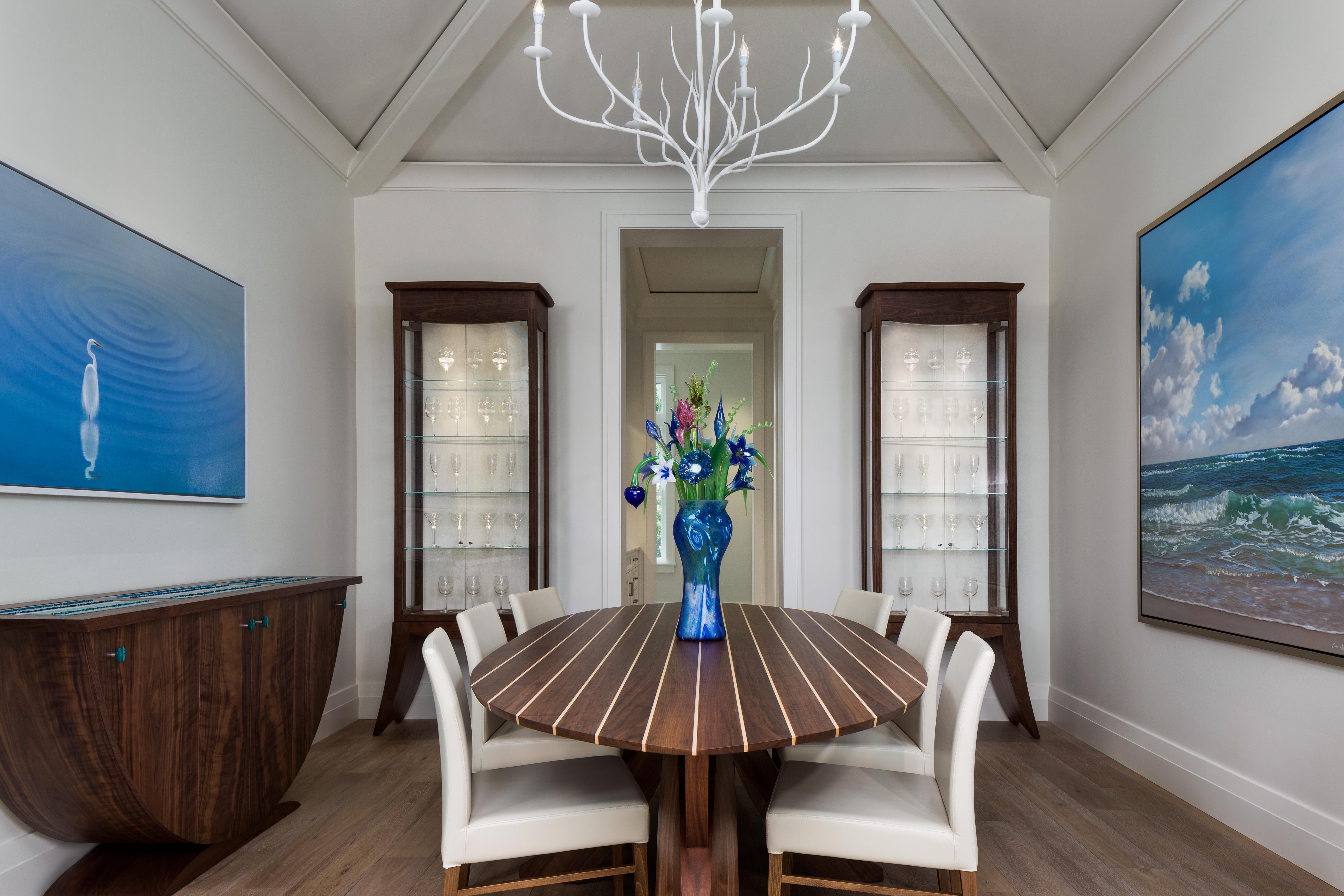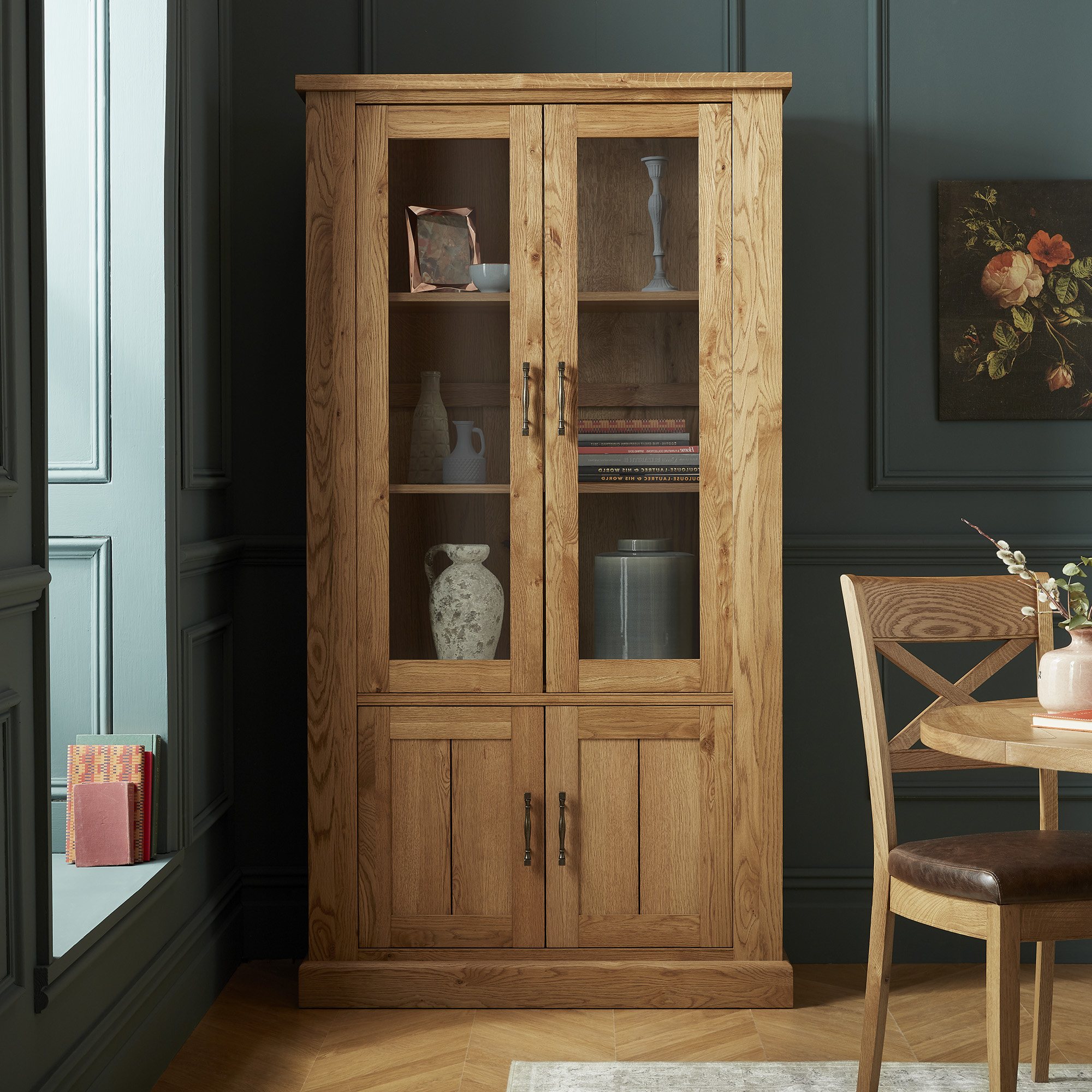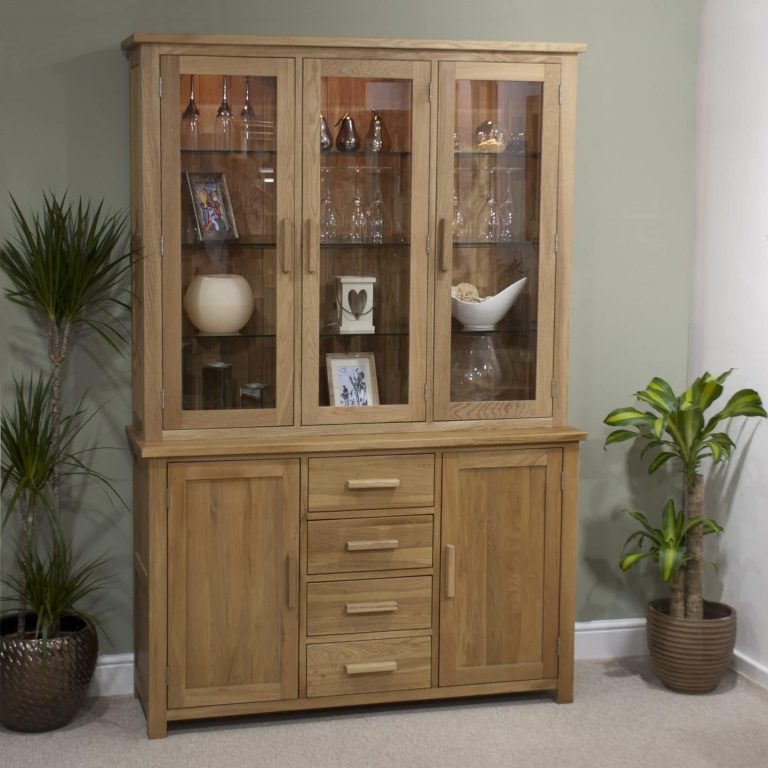The Evolution of Dining Room Display Cabinets

Dining room display cabinets have a long and rich history, evolving from functional storage solutions to decorative focal points. Their evolution reflects changing societal values, design trends, and technological advancements.
The Historical Significance of Display Cabinets, Dining room display cabinet
Display cabinets have been a staple in dining rooms for centuries, serving both practical and symbolic purposes. In ancient civilizations, cabinets were used to store valuable possessions, such as precious jewelry, silverware, and ceremonial objects. These early cabinets were often crafted from wood, metal, or stone, adorned with intricate carvings and embellishments.
During the Renaissance, display cabinets gained prominence as symbols of wealth and status. They were often made from luxurious materials like mahogany and walnut, featuring elaborate carvings and decorative elements. The cabinets were used to showcase fine china, silverware, and other prized possessions, demonstrating the owner’s social standing and refined taste.
Evolution of Design Styles
Display cabinet designs have evolved significantly over time, reflecting changing aesthetic preferences and architectural trends.
- Traditional Styles: Traditional cabinets typically feature ornate carvings, intricate moldings, and classic finishes. Popular styles include Queen Anne, Chippendale, and Victorian. These cabinets often feature glass doors and shelves, allowing for the display of cherished items.
- Mid-Century Modern Styles: Mid-century modern cabinets emerged in the mid-20th century, characterized by clean lines, simple forms, and a focus on functionality. These cabinets often feature minimalist designs, using materials like teak, rosewood, and glass. They often have open shelves or display areas, allowing for a more contemporary and less cluttered aesthetic.
- Contemporary Styles: Contemporary display cabinets embrace modern design principles, featuring bold geometric shapes, sleek lines, and innovative materials. They may incorporate elements like metal accents, acrylic panels, and LED lighting. These cabinets often have a minimalist aesthetic, prioritizing functionality and clean lines.
Materials and Craftsmanship
The materials and craftsmanship used in display cabinets have also undergone significant transformations over time.
- Traditional Materials: Traditional cabinets were often crafted from solid hardwoods like mahogany, walnut, and oak. These woods were prized for their durability, beauty, and natural grain patterns. Skilled artisans used hand tools and traditional techniques to create intricate carvings and decorative elements.
- Modern Materials: Modern display cabinets incorporate a wider range of materials, including glass, metal, acrylic, and engineered woods. These materials offer versatility, durability, and a more contemporary aesthetic. Advances in manufacturing techniques have enabled the creation of more complex designs and finishes.
- Craftsmanship: While traditional cabinets were often handcrafted by skilled artisans, modern cabinets are often produced using a combination of hand-crafted and mass-production techniques. This allows for greater efficiency and affordability, while still maintaining a high level of quality and design.
Types of Dining Room Display Cabinets

Dining room display cabinets come in various styles, each offering unique features and benefits to enhance the functionality and aesthetics of your dining space. These cabinets cater to different needs, from showcasing cherished collections to providing ample storage for tableware and other dining essentials.
Buffet Cabinets
Buffet cabinets are versatile pieces of furniture that combine storage and display elements. They typically feature a lower section with doors or drawers for storing linens, serving dishes, or other dining accessories. The upper section often includes open shelves or glass-fronted cabinets for displaying decorative items, glassware, or china.
Buffet cabinets offer a balance between storage and display, making them a practical choice for dining rooms with limited space. They can serve as a focal point in the room, adding a touch of elegance and sophistication.
Hutch Cabinets
Hutch cabinets are characterized by their distinctive two-tier design, with a lower base cabinet and an upper hutch. The base cabinet provides storage space for items that don’t need to be displayed, while the hutch offers a dedicated area for showcasing prized possessions.
Hutch cabinets are often designed with glass doors or open shelves in the hutch, allowing for maximum visibility of the displayed items. They can be crafted from various materials, including wood, metal, and glass, and come in a wide range of styles to complement any décor.
China Cabinets
China cabinets are specifically designed for displaying and storing fine china, glassware, and other delicate items. They typically feature glass doors or shelves, providing a clear view of the contents.
China cabinets often come with intricate details, such as ornate carvings, decorative hardware, and elegant finishes. They are a statement piece in any dining room, adding a touch of sophistication and grandeur.
China cabinets are a timeless classic, adding a touch of elegance and sophistication to any dining room.
Styling and Decorating with Dining Room Display Cabinets

Dining room display cabinets are more than just storage solutions; they are integral elements in defining the aesthetic appeal and personality of your dining space. The right display cabinet can transform your dining room into a captivating showcase for treasured possessions, cherished memories, and artful displays.
Choosing the Right Size and Style
The size and style of your display cabinet should be carefully considered to ensure it complements your dining room’s existing décor and dimensions. A well-proportioned cabinet will enhance the overall visual harmony of the space, while a poorly chosen one can create an imbalance or overwhelm the room.
- Consider the Size of Your Dining Room: A large cabinet might dominate a small dining room, while a small cabinet could get lost in a spacious one. Measure the available space and choose a cabinet that fits proportionally, leaving enough room for comfortable movement and traffic flow.
- Assess Your Existing Décor: The style of your display cabinet should complement the overall aesthetic of your dining room. For instance, a traditional dining room would be well-suited for a classic, ornate cabinet, while a modern dining room might benefit from a sleek, minimalist design.
- Think About the Display Items: The size and style of your display items will influence the type of cabinet you choose. If you have large, statement pieces, you will need a cabinet with ample space and display shelves. For smaller items, a more compact cabinet with intricate details might be more appropriate.
Arranging and Displaying Items Effectively
Arranging and displaying items in your dining room display cabinet requires a thoughtful approach, considering principles of balance, symmetry, and color harmony. A well-curated display will transform your cabinet into a visual focal point, showcasing your taste and personality.
- Balance and Symmetry: Achieve visual balance by distributing items evenly across the shelves. Symmetrical arrangements, where items are mirrored on either side of the center, create a sense of order and harmony. Experiment with different arrangements to find what best suits your style and preferences.
- Color Harmony: Consider the colors of your display items and the overall color scheme of your dining room. A cohesive color palette will create a sense of unity and visual appeal. You can use a color wheel to identify complementary colors that create visual interest, or stick to a monochromatic color scheme for a more understated look.
- Vary Heights and Textures: Create visual interest by varying the heights and textures of your display items. For example, you can combine tall vases with low-lying books, or use items with contrasting textures like smooth glass and rough pottery. This creates a dynamic and visually appealing display.
Showcasing Personal Collections, Artwork, and Decorative Items
Dining room display cabinets offer an excellent opportunity to showcase personal collections, artwork, and decorative items, transforming your dining space into a personal gallery.
- Display Personal Collections: If you have a collection of china, glassware, or other items, a display cabinet can be a perfect way to showcase them. Arrange your collection in a visually appealing manner, considering color harmony and balance.
- Showcase Artwork: Displaying artwork in a dining room display cabinet can add a touch of elegance and sophistication. Consider the size and style of your artwork when choosing a cabinet. A large cabinet can accommodate larger pieces, while a smaller cabinet is ideal for showcasing smaller prints or photographs.
- Decorative Items: Dining room display cabinets are also perfect for displaying decorative items, such as candles, vases, sculptures, or other objects that add a touch of personality to your space. Arrange these items in a way that complements the overall aesthetic of your dining room.
A dining room display cabinet can be a real statement piece, showcasing your prized possessions and adding a touch of elegance to the space. But don’t forget about the flow of your home – consider how the style of your dining room cabinet complements the overall design.
For example, if your kitchen features cream cabinets, you might want to explore kitchen floor tile ideas with cream cabinets to create a cohesive look. A well-chosen cabinet can tie together the different areas of your home, creating a harmonious and stylish environment.
A dining room display cabinet is a fantastic way to showcase your favorite treasures, but remember, it’s all about balance. If you’re going for a cohesive look, consider the color scheme of your kitchen. A sleek grey and navy kitchen cabinet setup, like those found here , would pair beautifully with a dining room cabinet featuring similar tones.
The result? A curated and stylish space that flows seamlessly from one room to the next.
